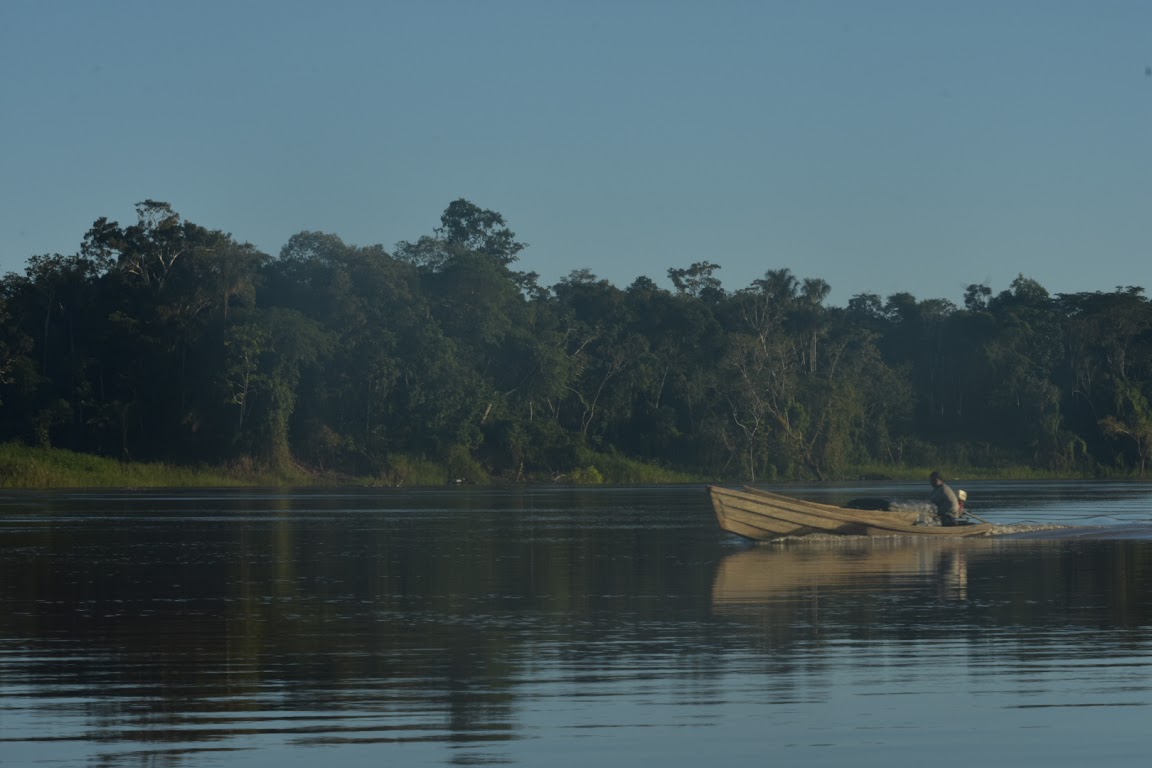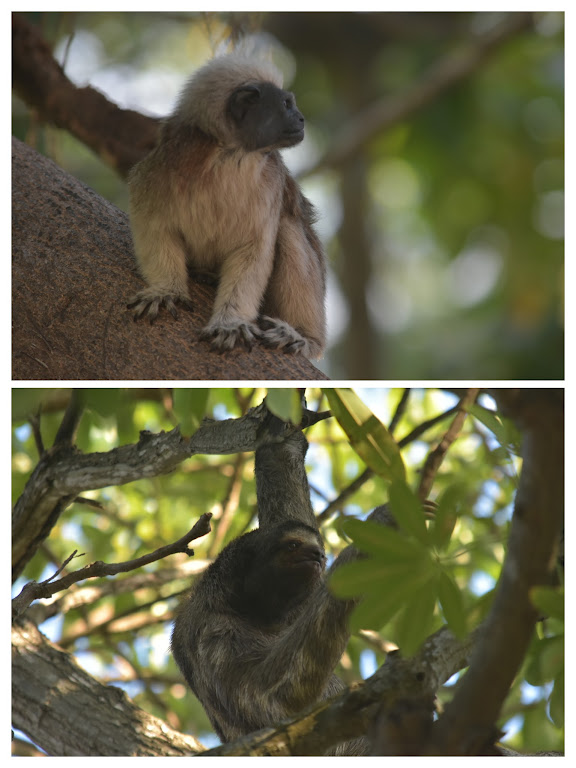Jardin’s Cock of the Rock Garden – The Complete Guide
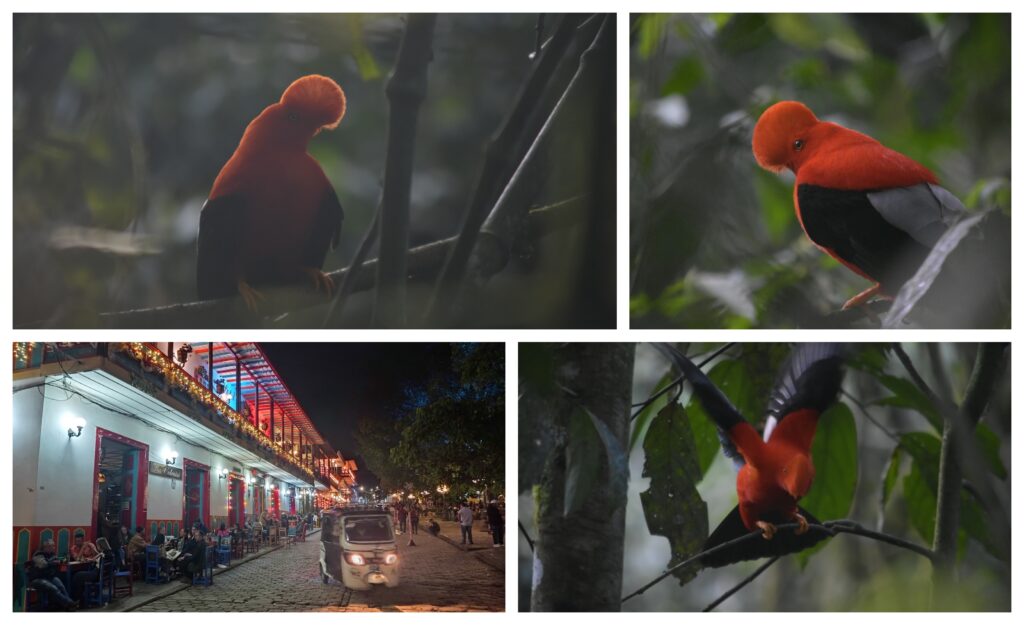
Located a few hours from Medellin and deeper into the mountains, Jardin is a small town nestled slap-bang in the middle of the famous Coffee Triangle. I do mean small: it takes roughly five minutes to stroll from the central plaza to its outskirts, where you’ll find a curious attraction for nature lovers and visitors to this town alike: a riverside house with a large garden, where male cocks-of-the-rock come to lek every day.
Contents
What is a lek? And what is a cock-of-the-rock?
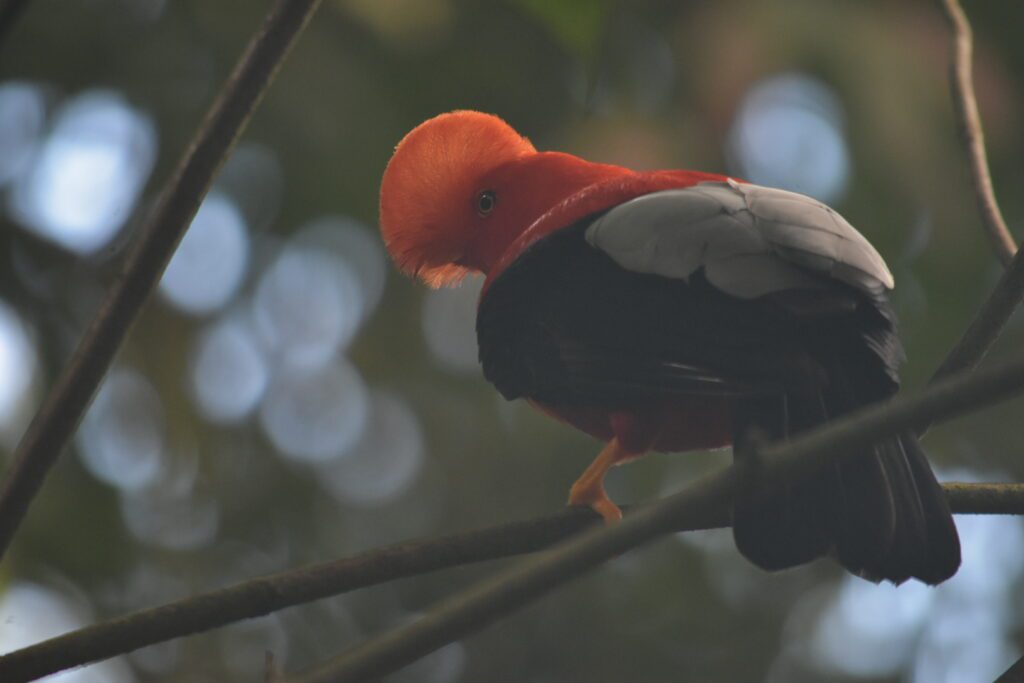
A “lek” is a traditional display site where male animals gather to perform courtship displays in order to attract females. Females, if they turn up, will then be given a show and select the best performer to mate with outside the lekking area. As well as the cock-of-the-rock, this behaviour has been observed in other birds and certain species of insects, fish, and mammals.
The Andean cock-of-the-rock is a bird typical of the cloud forests that span the Andes’ northern half. Both genders have black wings and orange heads, though the males are a much brighter shade of orange and have spectacular crests which they use in spectacular courtship displays. Every day, males gather at lekking sites to perform these.
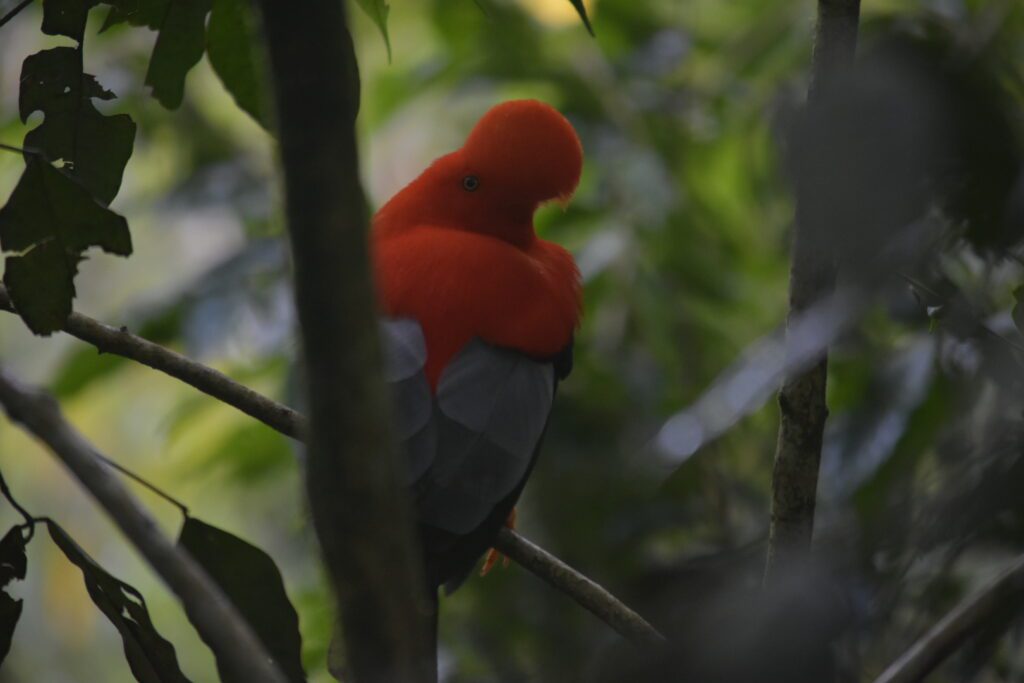
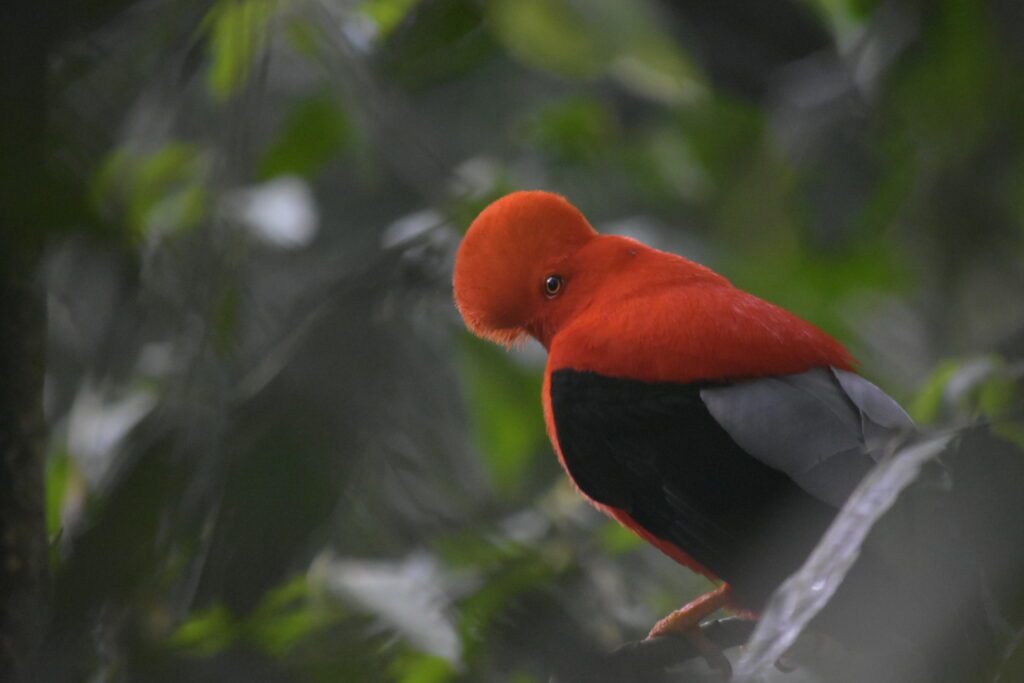
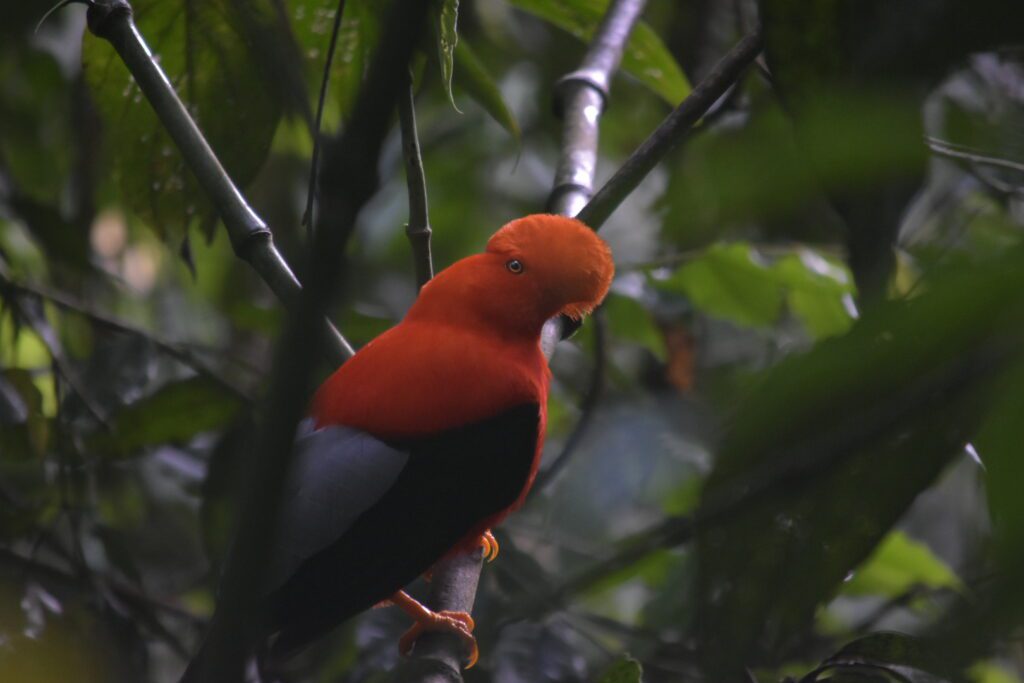
Displays typically involve the male birds puffing out their colourful plumage, spreading their wings, and performing a variety of movements, including bowing, leaping, and dancing, in order to attract a mate. All the way through their crests are erect, going so far around their head that their beak almost disappears.
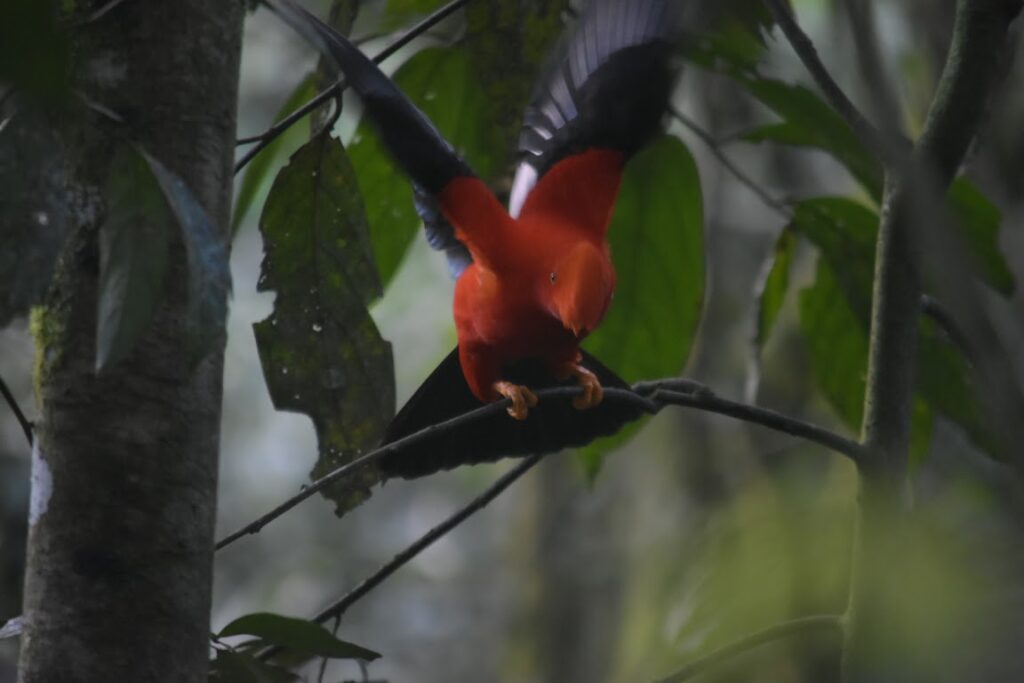
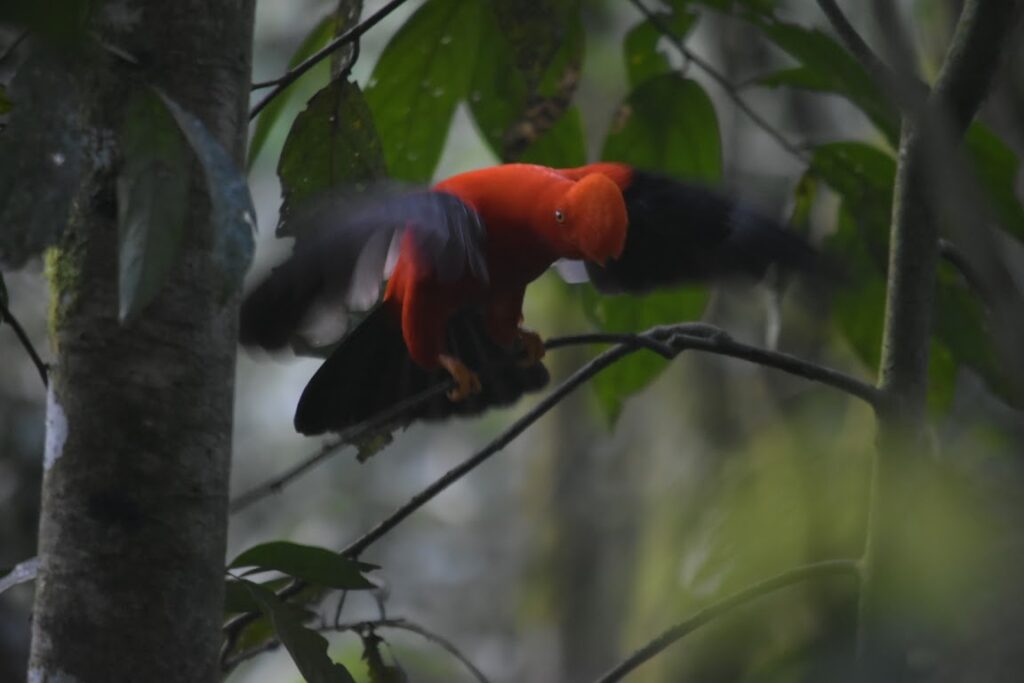
A practical guide to visiting Jardin’s cock-of-the-rock garden
Reserva Natural Jardin de Rocas, as it is known in Spanish and on Google Maps, is a family-run labour of love open from 3.30 PM until 6 – unlike most birds, male cocks are not usually up and about in the morning.
The garden is quite easy to reach from anywhere in Jardin. The best way to get there is to go to the western end of the main square (the one opposite the cathedral) and heading directly south. Just before you reach the bridge, you’ll see a small road on the right – head down this road until you see a tall double gate with a two-storey house behind it. Give it a knock and the proprietor should come by – try not to yell loudly, though, so as not to scare the cocks inside.
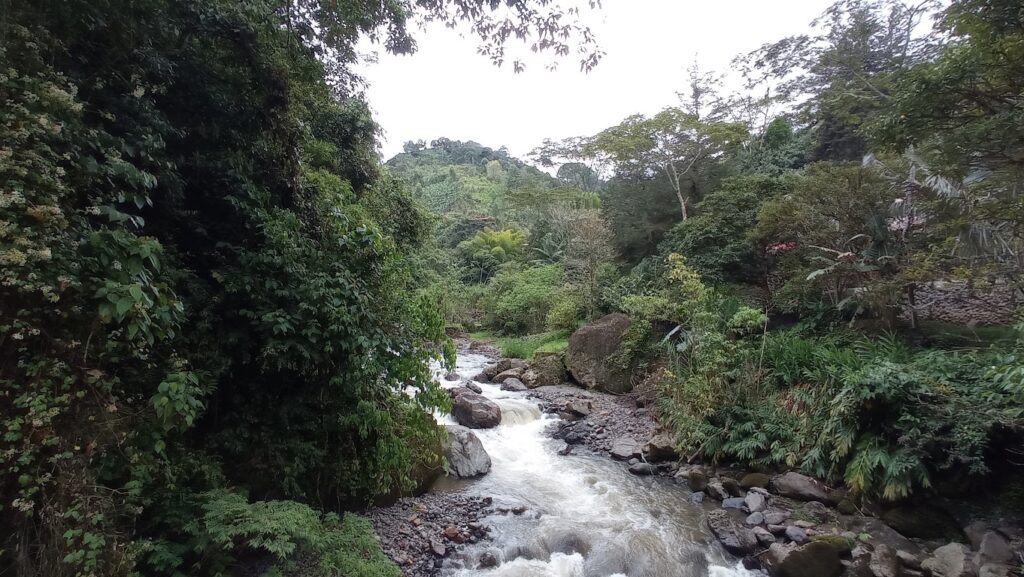
Entry cost COP$12,000 (US$2.65, £2.15) at the time of writing, though current prices can be found on the reserve’s website. There is also the option to reserve one’s visit on there, but it didn’t seem to be necessary when I went. As with many places in Colombia, only cash is accepted.
Homemade pastries and locally-grown coffee are available at the onsite cafe.
Male cocks are all over the surrounding branches, often perching mere metres away from spectators. Bobbing their heads and flapping their wings, they put on a show all afternoon in hopes that a female will turn up and select a mate. As well as the cocks, there are bananas put out on a branch that attract colourful tanagers, barbets and motmots.
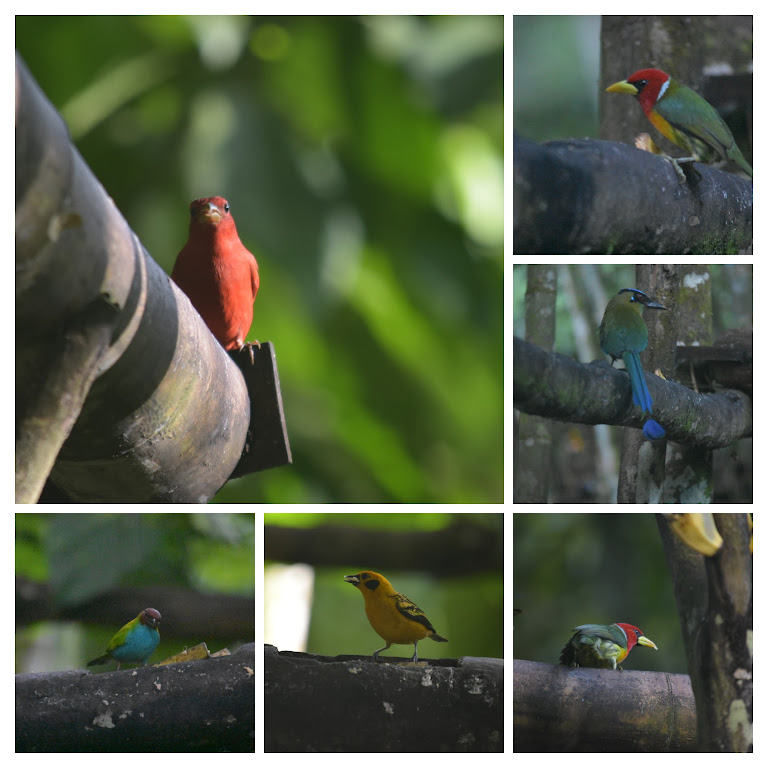
Writer’s experience
I’m hoping two things as I make my way down the slope to the house, both of which relate to the recently passed afternoon rain. One, that the path is not too slippery, two, that the male cocks haven’t such a fear of getting wet that their daily lek is weather-dependent. Almost unlucky on the first, as my trainers narrowly avoid losing their grip on the lubricious path beneath me.
At the gate, a señora, presumably the owner, lets me in and I pay my pesos. I make my way around the house, following another group of recently arrived visitors, to a side shadowed by the surrounding forest. It doesn’t take long to spot the first cocks They make no attempt to hide, not from their human spectators, nor from any females who may be watching.
That day, I praise myself for having cleared my camera’s SD card ahead of time. So close are these beautiful birds that I’ve no trouble filling the frame with their flamboyant crests, the picture’s quality razor-sharp. Of course, I don’t spend all my time staring down the lens – my naked eyes are treated to just as fine a performance, the cocks bobbing their heads and bouncing about on the branches.
I’m given to understand that females don’t turn up every day, and yet the males must put as much passion into each performance as the last. It’s a hard life. Although it must be said, males play no part in helping females to raise their chicks.
Physical fights between males are rare, since they tend to prefer dance-offs as a form of one-upping each other. Nonetheless, they do happen, as I later discover in a slightly blood-pumping way.
I’m sat at a table in the cafe section, awaiting my coffee, when suddenly a cock falls from the branches above. It lands just off the opposite side of the table – I thought it dead at first, before looking over and realising that this was a pair of cocks. Their feet are locked together, and one has its bill clamped around the other’s neck. I’ve heard mating described as “cut-throat” before, but this certainly takes it to another level.
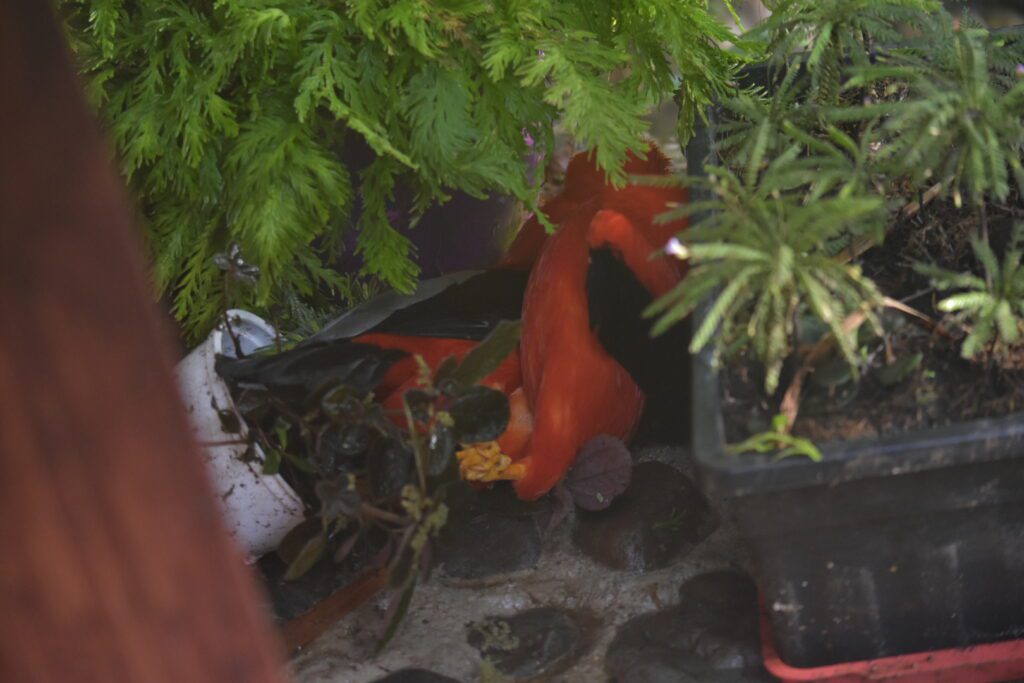
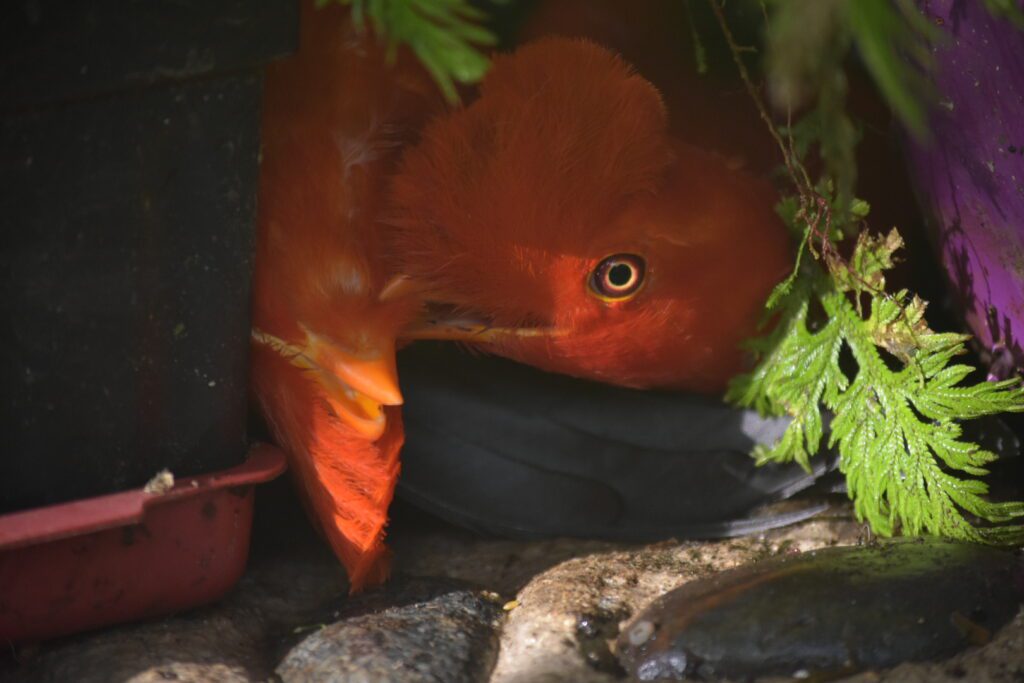
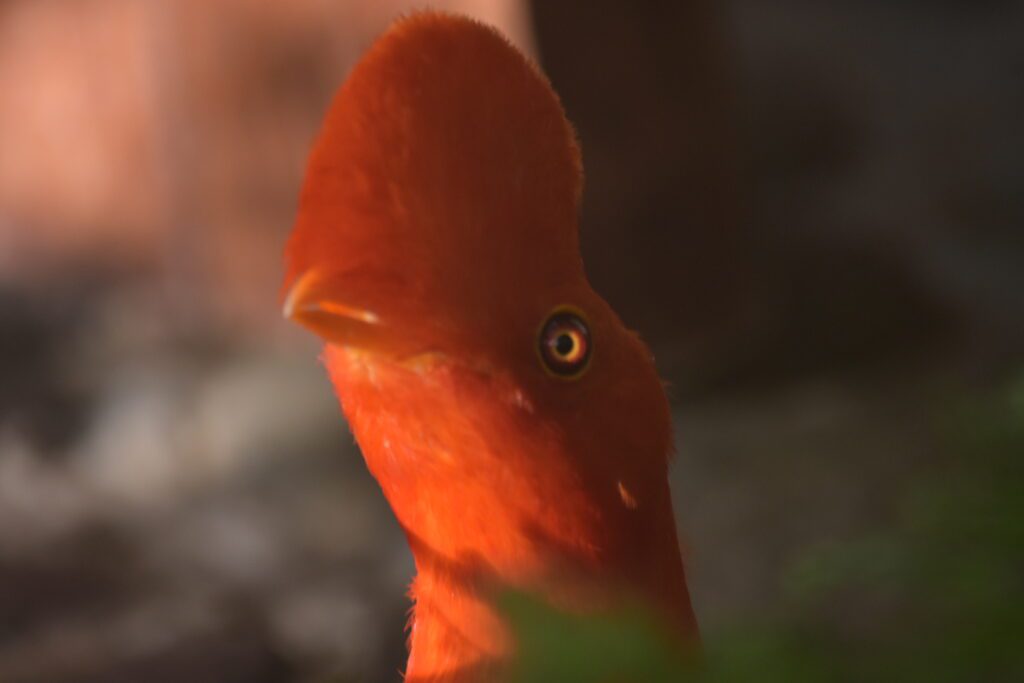
Eventually, the triumphant cock relinquishes its grip and peeks its head upwards at the human onlookers, as if it were about to make a victory speech. With its eyes a psychotic shade of red, I can only imagine its words would have been as colourful as its plumage. And then, both it and the loser take off, flying back to the branches.
Now, to address the question that was surely on your mind all the way through that story, Dear Reader: the coffee was delicious. Ironically, Colombian coffee is generally awful – locally-grown coffee is as amazing as its world-famous reputation would have you believe, but 96% of Colombia’s coffee is exported to European and US markets. Most coffee consumed in Colombia is low-quality produce from El Salvador or Peru, since it’s cheap and coffee culture never really took off in Colombia. Here, at Reserva Natural Jardin de Rocas, I am treated to a cup of the heavenly 4%. Its rich taste does a dance on my taste buds, and it’s a coffee I happily savour rather than slug.
A quick guide to Jardin itself

Outside wildlife circles, Jardin is known for two things: its surrounding coffee plantations whose produce adorns the shelves of many a Walmart and Morrisons, and its colourful colonial architecture. Case in point: when I was on a free walking tour of Medellin, my guide, a heavily loquacious bloke, said without prompting or agenda that Jardin is the most beautiful town in the region.
In Jardin, you can enjoy a variety of activities such as hiking in the lush green mountains, touring nearby coffee plantations and exploring the town’s streets. One place that will almost certainly catch your eye and steal your heart is the beautiful main square (Parque Principal) where visitors while away the hours, under the gaze of the impressive cathedral and surrounded by bars blasting salsa music.
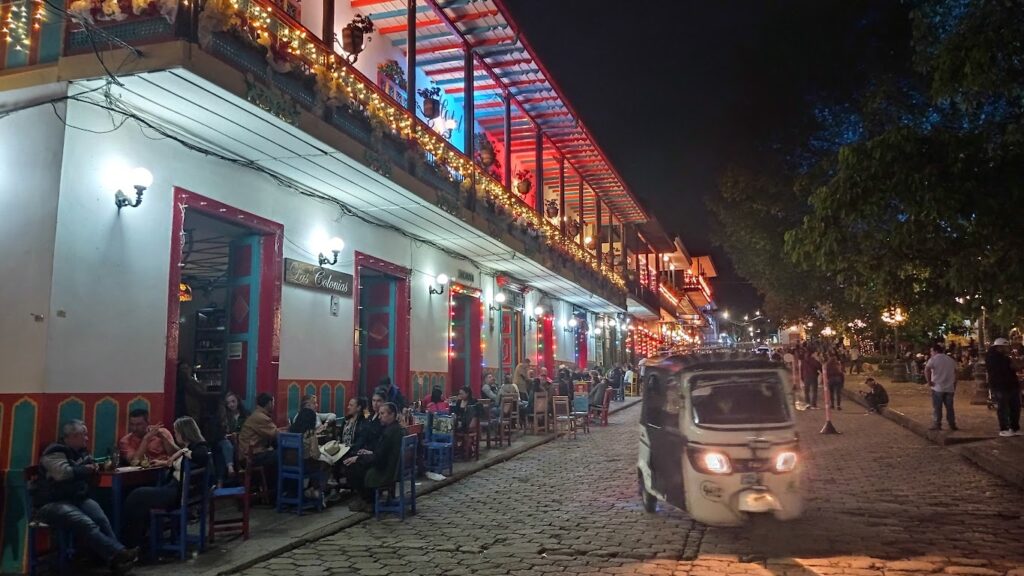
Visit at the right time and you may experience one of Jardin’s lively festivals and events, such as the annual flower fair, which is held in August. Even if there aren’t any official spectacles happening, you may still see cowboys training their horses in the streets around the main square – the purpose of this definitely isn’t just to put on a show, since they make no effort to collect coins from spectators afterwards.
You should keep in mind that Jardin is a small town, and lodgings are limited, so it is best to plan ahead and book accommodation in advance.



